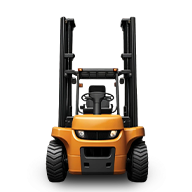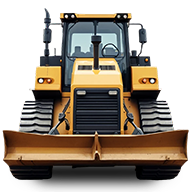What is a Mobile Data Terminal (MDT)?
- October 28, 2025
- 2:42 pm
A complete guide to Mobile Data Terminals (MDTs): what they are, how they work, and how they power connected public transport and smart fleet operations.
1. What is a Mobile Data Terminal (MDT)?
A Mobile Data Terminal (MDT) is a specialized electronic vehicle-mounted device designed to enable real-time communication and data exchange between a vehicle and a central system. This MDT device is widely used across multiple industries, including:
- Public Transportation
- Logistic
- Taxi Industry
- Emergency Services
- Law Enforcement
- Waste Management
- Precision Farming
- Construction Industry
MDTs are designed to enhance operational efficiency, situational awareness, and decision-making in the field.
Typically powered by a dedicated operating system, MDTs support applications for navigation, diagnostics, fleet management, remote fleet monitoring, and communication. In advanced scenarios, MDTs evolve into mobile intelligent terminals, capable of running sophisticated software, AI-powered analytics, and sector-specific tools.

Digitax ATOMO 10 MDT — advanced Android Mobile Data Terminal for fleet and transport applications
The ATOMO 10 MDT brings advanced Android intelligence to fleet operations — connecting drivers, data, and dispatch in one powerful platform
TABLE of CONTENTS
-
What is a Mobile Data TerminalWhat is a Mobile Data Terminal
-
Key Applications of Mobile Data Terminals in Professional FieldsKey Applications of Mobile Data Terminals in Professional Fields
-
Core Functions of MDTs in Fleet and Transit OperationsCore Functions of MDTs in Fleet and Transit Operations
-
Features and Capabilities of Modern Mobile Data TerminalsFeatures and Capabilities of Modern Mobile Data Terminals
-
FAQFAQ
2. Key Applications of Mobile Data Terminals in Professional Fields
 Public Transportation
Public Transportation
- MDTs assist drivers with route management, scheduling, and passenger information.
- Integrated tracking and automation features improve service punctuality and fleet performance.
- Devices like the rugged tablet are often used to ensure long-term reliability in high-usage environments.

Logistic and Delivery Services
- Drivers use MDTs for delivery tracking, real-time route optimization, and communication with dispatchers.
- In logistics chains, MDTs reduce delays, support dynamic routing, and increase delivery accuracy while reducing costs.
 Emercency Service
Emercency Service
- First responders receive critical incident data before arriving on scene, including exact location and emergency type.
- MDTs—often ruggedized—enable faster, informed decisions and improve team coordination.
 Taxi Services
Taxi Services
- MDTs or rugged tablets provide navigation, passenger data, fare tracking, and direct dispatch communication.
- As a taxi dispatch device, the MDT integrates with central platforms to improve response time and enhance the rider experience.

Waste Management
- MDTs track pickup schedules, optimize routes, and log waste collection data in real time.
- Devices installed in waste collection trucks improve routing efficiency and help in reducing operational costs.

Construction Industry
- MDTs are mounted in construction vehicles and equipment to track usage, monitor diagnostics, and support project logistics.
- Rugged tablets allow on-site supervisors to manage blueprints, tasks, and safety checks in real time.
 Law Enforcement and Public Safety
Law Enforcement and Public Safety
- MDTs provide instant access to vehicle registrations, criminal records, and active warrants.
- Improve communication between officers, command centers, and emergency services








3. Core Functions of MDTs in Fleet and Transit Operations
- Real-Time Vehicle Tracking and Navigation
- Integrated GPS and AVL systems provide live trackingfor vehicles in transit.
- Essential for sectors like public transportation, taxi services, and waste managementto monitor fleet status and reroute in real time.
- Streamlined Communication
- MDTs allow for low-bandwidth, structured messagingbetween drivers and central command.
- Reduces radio chatter and ensures organized, documented communication across multiple industries.
- Operational Data Management
- Captures data such as passenger counts, pickup confirmations, service logs, fare collectionsand more.
- In construction, waste collection, and farming, this data aids compliance, billing, and performance optimization.
- Vehicle Monitoring and Diagnostics
- Monitors engine health, fuel usage, brake condition, and alerts for maintenance.
- Supportspredictive maintenance, reducing breakdowns across vehicles in demanding environments like construction sites or long-haul logistics.
4. Features and Capabilities of Modern Mobile Data Terminals
- Rugged Design
- Built to withstand dust, vibration, impacts, and extreme weather conditions.
- Devices like the rugged tabletare ideal for the construction industry, farming equipment, waste collection trucks, and emergency vehicles.
- Intuitive Interfaces
- Touchscreen interfaces with customizable softwarereduce the learning curve and improve task execution.
- Streamline daily operations across public and private fleet services, from bus drivers to crane operators.
- Reliable Connectivity
- Real-time data transmission via Wi-Fi, cellular, or satellite networks ensures 24/7 operation.
- Vital for taxi dispatch systems, remote construction sites, and rural farming operations.
- Flexible Integration and Mounting
- Suitable for in-vehicle installation or portable use, MDTs adapt to a wide variety of vehicle types.
- Data Security and Privacy in MDTs
Security is fundamental to the design of MDTs and mobile intelligent terminals:
- Data is protected through advanced encryption protocols, both in transit and at rest.
- Authentication systems and role-based permissions prevent unauthorized access.
- Regular security updates and compliance features meet data protection standards across industries, including public safety, transportation, and farming.
- Operational Impact of MDTs
MDTs function as real-time operational control centers, connecting field personnel with headquarters. They:
- Enhance decision-making with instant access to mission-critical data.
- Automate repetitive tasks and ensure consistent data logging.
- Improve vehicle usage and reduce downtime.
- Provide situational awareness and fleet coordination to improve operational efficiency and support reducing costs across the board.
![]()
To understand the role of MDTs within fully connected fleets, take a look at our article on
How to improve fleet efficiency and reduce downtime with Digitax connected solutions

Digitax X-One Android — 7 inch compact Mobile Data Terminal .
Compact in vehicle mounted device with integrated navigation, job management, and driver interface for connected fleet operations
As mobile intelligent terminals, MDTs are evolving into platforms that support AI, cloud computing, and IoT integration, driving innovation across mobile workforce sectors.
Whether installed in a city bus, a waste collection truck, a tractor, a construction crane, or a taxi, Mobile Data Terminals (MDTs)— and their more advanced counterparts, mobile intelligent terminals— are transforming the way organizations manage field operations.
Thanks to their rugged design, smart features, and always-on connectivity, these MDT devices are the ideal solution for enhancing fleet management, remote monitoring, and communications in complex, multi-industry environments.
The combination of rugged tablet durability and intelligent system integration elevates these devices from basic tools to strategic operational hubs—driving safer, smarter, and more responsive field operations while reducing costs and maximizing operational efficiency.

Digitax mobile data terminals installed on fleet vehicles, showcasing the full range of multi-peripheral on-board solutions
Digitax offers a complete range of professional Mobile Data Terminals — from ATOMO to X-One — delivering smart connectivity, reliability, and real-time control for every fleet application.
![]()
After exploring what an MDT is, discover the benefits of a single-screen on-board computer for dispatch, maps and messaging in our article dedicated to Digitax all-in-one solutions.
10. FAQ
A Mobile Data Terminal (MDT) centralizes all on-board functions — from dispatch and navigation to communication and payments — within one single device. Solutions like the ATOMO 10 MDT or X-One Android help drivers manage trips, fares, and service reports in real time, while giving operators instant access to vehicle data and performance analytics.
Traditional tablets can fail under heat, vibration, or power surges. Automotive-grade MDTs like ATOMO 10 MDT or X-One Android are engineered for continuous use in demanding environments, with secure docking systems, extended temperature range, and safe shutdown controls. They reduce downtime and replacement costs, making them ideal for high-mileage fleets and 24/7 services.
Yes — when paired with devices like the ATOMO 7 Validator or integrated into the ATOMO 10 ETS system, MDTs support all major standards including EMV, Calypso, MIFARE, and QR-based open payments. This allows operators to manage both dispatch and fare collection through one connected platform.
Absolutely. A rugged MDT lasts significantly longer than consumer-grade tablets, reduces the number of separate devices needed, and ensures constant connectivity via LTE, Wi-Fi, and GPS. Over time, it delivers a higher return on investment by improving reliability and minimizing technical interventions.
![]() > Still using consumer devices on board? Discover why industrial-grade hardware is a better choice in our dedicated article.
> Still using consumer devices on board? Discover why industrial-grade hardware is a better choice in our dedicated article.
- Yes — the Digitax SDK enables developers and system integrators to build custom applications, tariff structures, or integration layers. This flexibility allows every fleet to tailor the system to its exact operational and regulatory needs.
Digitax MDTs are designed as part of an interconnected ecosystem that combines driver consoles, ticket validators, and cloud-based services. By reducing hardware complexity and streamlining communication, they contribute to smarter, cleaner, and more efficient fleet management.
Key aspects to consider include: automotive-grade durability, upgradeable Android platform, comprehensive I/O interfaces (CAN Bus, RS232, Ethernet, GPS), and compatibility with ticketing and payment modules. Devices like the ATOMO 10 MDT meet all these requirements, offering scalability for public transport, taxi, and smart mobility applications.
Digitax MDTs combine cutting-edge automotive hardware with an open Android architecture, ensuring top performance, security, and future-proof scalability. Each device — from the ATOMO 10 MDT to the ATOMO 10 ETS — is built around the Digitax Platform-on-Module, allowing easy upgrades of CPU, OS, and communication modules. Through the Digitax SDK, operators can fully customize interfaces, data flows, and applications, adapting the system to any fleet or transport environment — from public networks to specialized mobility services.
Yes — all Digitax MDTs are industrial-grade devices built for continuous operation in demanding environments. Each unit complies with automotive and industrial standards for vibration, temperature, and electrical protection, featuring IP and ESD/EMC certifications.
This ensures reliable performance even under heavy use in public transport, taxi, logistics, and special vehicle fleets. Combined with Digitax’s modular design and Platform-on-Module architecture, the hardware guarantees long lifecycle, low maintenance, and outstanding durability — making it ideal for professional mobility applications.







